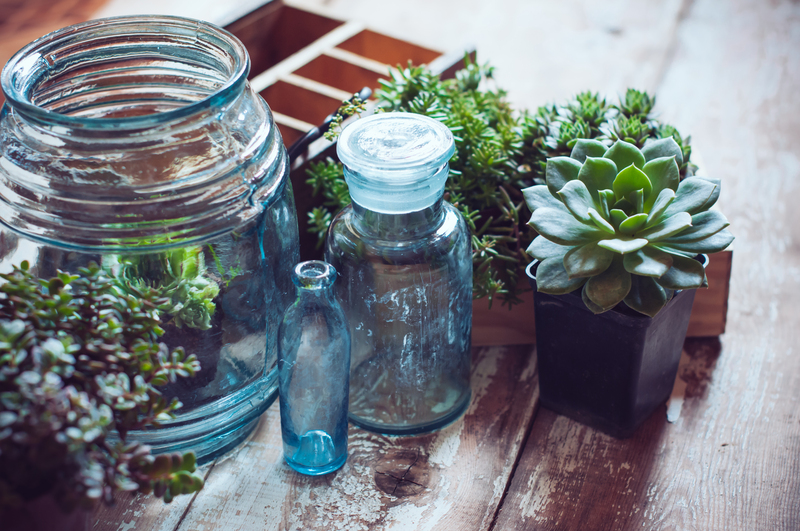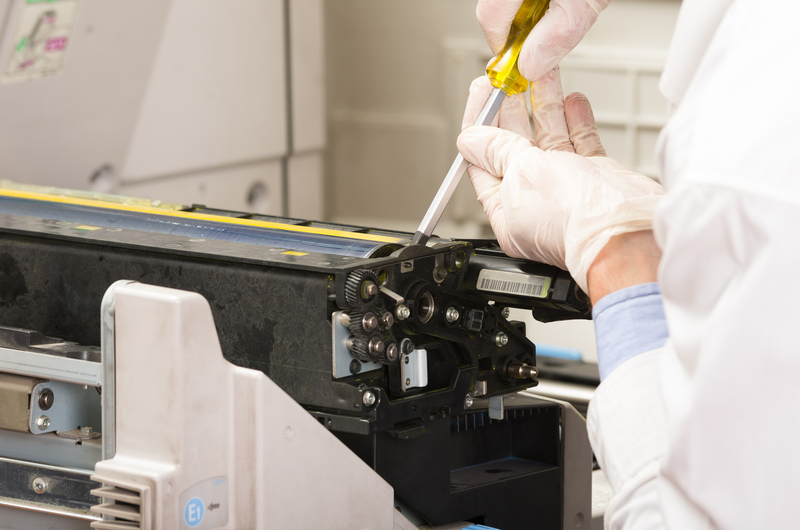Surprising Transformations: Everyday Objects Become Art Through Upcycling
Imagine walking into a gallery and discovering that the breathtaking sculpture before you once lived its life as an old bicycle chain, or realizing that the vibrant wall mural in your neighborhood is actually a collage made from hundreds of discarded bottle caps. This is the magic of upcycling--where ordinary items destined for the landfill find new life as extraordinary art.
In this comprehensive guide, we explore how upcycling is revolutionizing modern art and design. See everyday items leap from the mundane to the magnificent, and learn how you, too, can take part in these inspiring transformations. Upcycling art is more than a trend--it's a creative movement driving sustainability and self-expression around the world.
What Is Upcycling? The Meaning Behind the Art
Upcycling is the process of transforming waste materials, unwanted products, or seemingly useless items into new materials or products of higher quality and value. Unlike recycling, which usually breaks materials down, upcycling preserves and reinvents the original object, allowing its history and character to shine through in the finished artwork.
- Environmental impact: Reduces landfill waste and conserves natural resources.
- Creativity unleashed: Promotes innovative thinking and resourcefulness.
- Economical benefits: Offers a cost-effective way to produce art and functional items.
Upcycled art is not only eco-friendly, but also deeply personal. Each creation tells a story, inviting the viewer to see the world through a lens of possibility rather than disposal.

How Everyday Objects Become Art: The Upcycling Process
Turning everyday objects into art through upcycling involves a few key steps that anyone can follow:
- Collecting Materials: From broken ceramics to rusty tools, almost anything can be upcycled. Artists source materials from homes, junkyards, thrift stores, and even city streets.
- Conceptualizing: Creative minds visualize new possibilities for discarded objects, reimagining form and function.
- Transformation: Through cutting, painting, assembling, or sculpting, the object undergoes a stunning metamorphosis.
- Finishing Touches: Final treatments--like varnishing, embellishing, or mounting--add polish and durability.
The result? A surprising transformation that challenges our perceptions of value and beauty.
Iconic Examples: Remarkable Upcycling Art Projects
Across the globe, artists and communities are harnessing the power of upcycling to create jaw-dropping installations and works of art. Here are just a few noteworthy examples:
1. Bottle Cap Mosaics
From vibrant murals adorning public parks to intricate designs featured in galleries, bottle caps have found a second life as the building blocks of mesmerizing mosaics. Gathered from community recycling drives, these caps introduce colorful patterns, intricate detail, and a powerful statement about waste and renewal.
2. Bicycle Part Sculptures
Artists like Sayaka Ganz transform metal gears, chains, and spokes into dynamic animal sculptures. This form of upcycled art not only celebrates mechanical beauty but also draws attention to transportation's environmental footprint.
3. Furniture from Pallets
Pallet wood, often discarded after a single use, becomes chic sofas, tables, and art installations. The transformation proves that functionality and artistry are not mutually exclusive--a true testament to creative upcycling.
4. Plastic Bottle Installations
Visionaries like Veronika Richterova craft floral sculptures and illuminated installations from waste plastic bottles. Through their efforts, these common cast-offs become radiant centerpieces in art galleries and eco-festivals worldwide.
5. Electronic Waste Art
Upcycled electronics, including keyboards, circuit boards, and wires, can be fashioned into futuristic cityscapes, portraits, or even functioning decor. These pieces serve both as social commentary and as inventive eco-friendly art.
Why Upcycled Art Matters: The Impact of Transformative Creations
Upcycling's rise goes beyond the visual spectacle--it stands at the intersection of culture, activism, and environmental stewardship.
Environmental Benefits
- Reduces Landfill Waste: By redirecting objects from waste streams, upcycled art diminishes environmental pollution.
- Conserves Resources: Less demand for virgin materials means less strain on natural ecosystems.
- Promotes Awareness: Each piece communicates messages about consumption and sustainability.
Social & Cultural Influence
- Community Engagement: Many upcycling projects foster collaboration among artists, schools, and local organizations.
- Empowerment: Upcycling art workshops teach new skills and encourage self-expression, often providing a creative outlet for underserved populations.
- Inspiring Change: These artistic transformations spark conversations and shift public attitudes towards waste and recycling.
How to Start Upcycling Everyday Objects Into Art
Are you inspired to embark on your own upcycling journey? Here's how to begin:
Step 1: See Value in the Ordinary
Start viewing your home and surroundings with fresh eyes. Ask yourself, "What could this be besides trash?" Empty jars, cereal boxes, old denim, and broken appliances can all be upcycled into art.
Step 2: Gather Supplies & Tools
- Glue guns, scissors, and pliers are useful for most projects.
- Paints, brushes, and embellishments can add flair.
- Safety gear, especially when working with metals or electronics.
Step 3: Seek Inspiration
- Follow upcycling artists on social media and platforms like Pinterest, Instagram, or YouTube.
- Visit local galleries, flea markets, and recycling centers for ideas.
- Join online communities dedicated to artistic upcycling.
Step 4: Plan and Create
- Sketch your design or make a mock-up first.
- Experiment with combinations of materials and textures.
- Don't be afraid to make mistakes--serendipity is part of the process!
Step 5: Share Your Creations
- Display your work at home or in local exhibitions.
- Share progress and finished pieces online using relevant hashtags.
- Inspire others by teaching or hosting your own upcycling art workshops.
Famous Upcycling Artists: Turning Rubbish into Masterpieces
The world is full of talented artists who are masters at transforming discarded materials into compelling works of art. Here are some of the most influential names in the field of upcycling art:
- Vik Muniz: Creates expansive portraits and landscapes using items like garbage, sugar, and chocolate, blurring the line between fine art and everyday life.
- Jane Perkins: Known for her detailed recreations of famous paintings and portraits using plastic toys, buttons, and beads.
- Edouard Martinet: Builds intricate insect sculptures from old car and bicycle parts, revealing nature's complexity through mechanical elegance.
- Haroshi: This Japanese artist carves vibrant sculptures from layered, discarded skateboard decks.
- Sarah Turner: Transforms plastic bottles into elegant lamps and chandeliers, mixing function with artistic flair.
DIY Upcycling: Creative Project Ideas You Can Try
Ready to get started? Here are some beginner-friendly upcycled art projects you can try at home:
1. Painted Glass Jar Lanterns
- Wash and dry used glass jars.
- Decorate with glass paint, beads, or wire.
- Insert LED candles to create glowing, eco-friendly lanterns.
2. Denim Wall Tapestry
- Cut old jeans into strips or patches.
- Sew or glue pieces onto a canvas or frame for a unique wall hanging.
- Add embroidery or sequins for extra detail.
3. Keyboard Key Magnets
- Pop the keys off a broken keyboard.
- Glue magnets to the back for quirky fridge decor.
4. Tire Planter Sculpture
- Thoroughly wash and paint old rubber tires.
- Stack or arrange them into creative shapes.
- Fill with soil and plants to bring green art to your yard or community space.
Upcycling is accessible to everyone. With a little creativity, the possibilities are endless--from DIY home decor to ambitious public installations.

How Upcycling Encourages Sustainability and Mindful Living
Artistic upcycling is not just an aesthetic endeavor; it's a powerful tool for advocating sustainable living. By participating in upcycling, you join a growing movement that:
- Raises awareness about resource scarcity and environmental impact.
- Reduces waste and extends the lifecycle of everyday objects.
- Inspires innovative solutions to global environmental challenges.
- Fosters creativity, mindfulness, and a sense of community.
Each upcycled masterpiece is a call to reconsider our relationship with stuff--proving that art truly exists everywhere, waiting to be discovered in the most unexpected forms.
Conclusion: Celebrating the Endless Potential of Upcycled Art
From bottle caps and old bikes to fabric scraps and forgotten gadgets, upcycled art transforms what was once waste into objects of wonder and meaning. These surprising transformations challenge us to look at our world differently, inspiring us to value creativity, sustainability, and the boundless possibilities hidden within the things we throw away.
Ready to embark on your upcycling journey? Whether you're a seasoned artist, a DIY enthusiast, or simply a curious observer, there's a place for you in the vibrant world of upcycling art. Every object thrown away is an opportunity for rebirth--so let your imagination lead the way, and uncover art in the everyday.
Have you created or been inspired by everyday objects turned into art through upcycling? Share your stories below and join the creative conversation!
